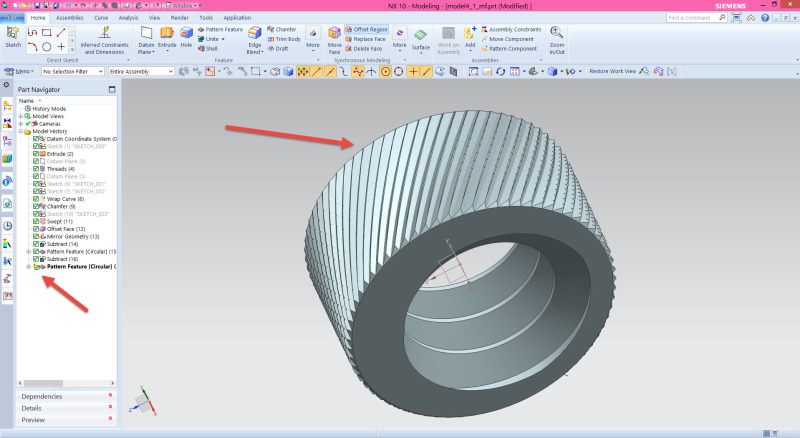Is this example a training exercise or is it... ?
Is there a purpose in actually cutting this pattern in the solid body ?
Is there a purpose in actually cutting the thread in the solid body ?
The reason I am asking , is that many users think that they should model all the details, even when there are standards for the purpose of "simplified drawing".
In most cases, a note on the drawing "Thread xxxxxx ,knurled yyyyyyy" will do the trick and the now mathematically very complex, large [MB] and slow model with the detailed thread and the knurls add nothing to the process, instead somebody has spent way too much time in creating it.
"In the old days" when we drew on paper with pencils and rulers, there was a number of good agreements in simplified drawing practices and standards. Imagine drawing a fence by hand, and then draw all the cords ... , - no nobody did, because they had better things to do. But now , using modern cad systems i have seen several examples of fully detailed fences!
and all you get is heavy files and long update times , but yes, it looks good.
I have modified the sweep in the attached model from the one Michael created,
1) I turned on "preserve shape". NX will then from the triangle sketch create 3 faces on the sweep instead of 2. ( Simpler and faster results in this case.)
2) I changed the orientation method of the sweep from Fixed to face normals. The sweep then rotates to follow the cylindrical face I think this is more as a true knurling operation would be. ( You can do a Edit with rollback Sweept(11) and try the two options to see the difference.)
Note, this model with the two arrays active is +14MB, with the two arrays suppressed ~3MB
Regards,
Tomas

